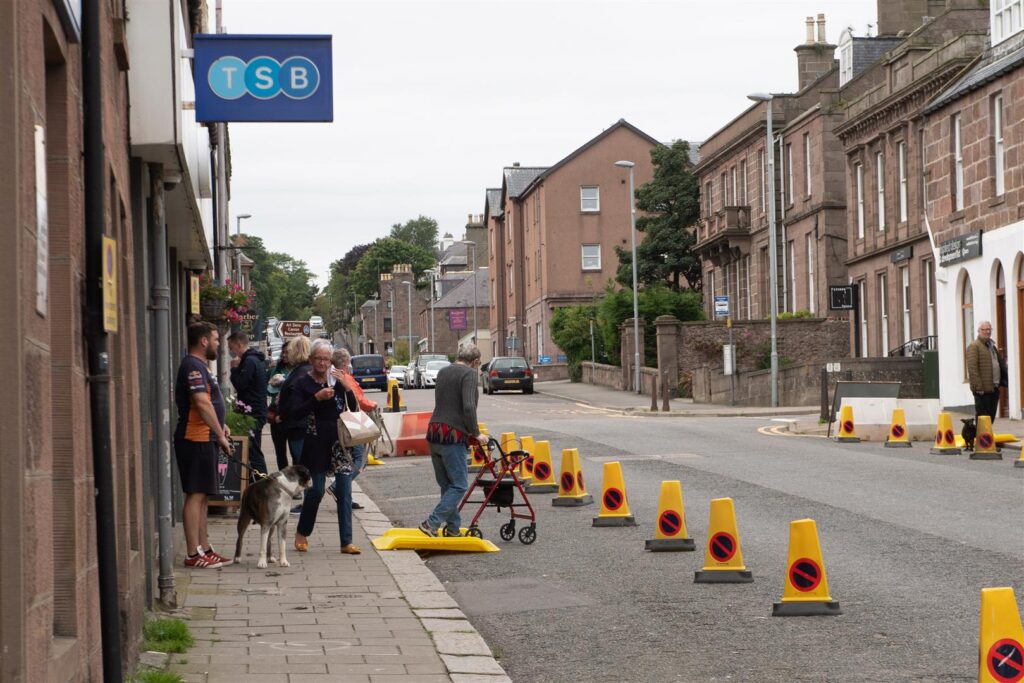Inclusivity in Infrastructure
Temporary measures introduced through Spaces for People are designed to protect public health and facilitate essential journeys for all groups, including those with additional support and mobility needs.
In support of this, Sustrans are working closely with local authorities to ensure that people with disabilities and other affected groups are considered appropriately throughout every project.
Today, we’re joined by Ali MacDonald, Organisational Lead for Healthy and Active Environments, Public Health Scotland as well as David Hunter, Independent Consultant at Mobility Access Committe Scotland (MACS) to discuss appropriate accessibility provisions across a variety of contexts in temporary infrastructure design.

Main Considerations
In terms of specific measures, please consider:
- Many disabled people are more reliant on their cars and taxis than
others. Appropriate provision must be made for parking, access etc. - Safe space for pedestrians should be separate from cyclists.
- Pavements should be kept free of obstacles/clutter, including roadworks. signs, bins, encroaching vegetation. These can be a particular hazard for visually impaired people and constrain footways for everyone.
- Any areas separated off to provide extra walking or cycle space must take into account how disabled people can get on or off the pavement; this is especially important at bus stops.
- Barriers (for example used to delineate a temporary pavement from a traffic lane) should be detectable by a blind person using a long cane.
- Attention should be given to making sure enforcement (for example of traffic speed, parking/cycling on pavements) is effective.
Further guidance on how to design inclusive walking, wheeling and cycling infrastructure in response to Covid-19 can be found here.
Questions Answered
- How do we ensure that projects meet the needs of everyone?
- How can we effectively consider the needs of disabled people without deepening existing health inequalities?
- What are the accessibility considerations around removing things from the streetscape to create more space?
Note: the examples shown are in no way prescriptive and are for information only. Where specific products are shown in this document, this does not constitute Sustrans’ endorsement of that product.